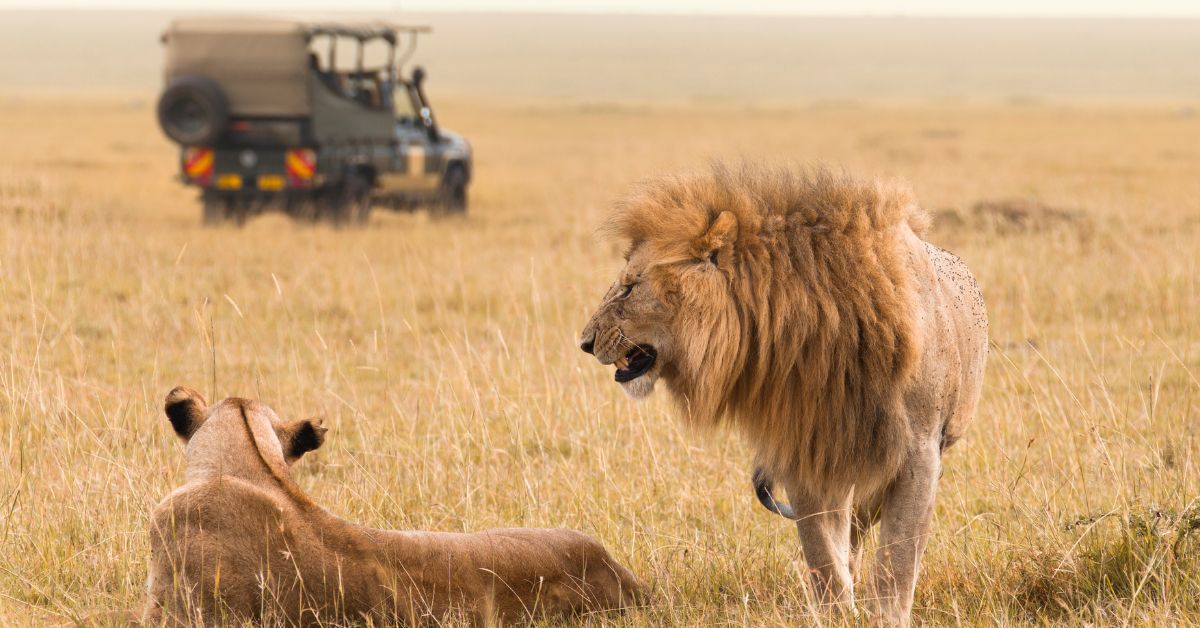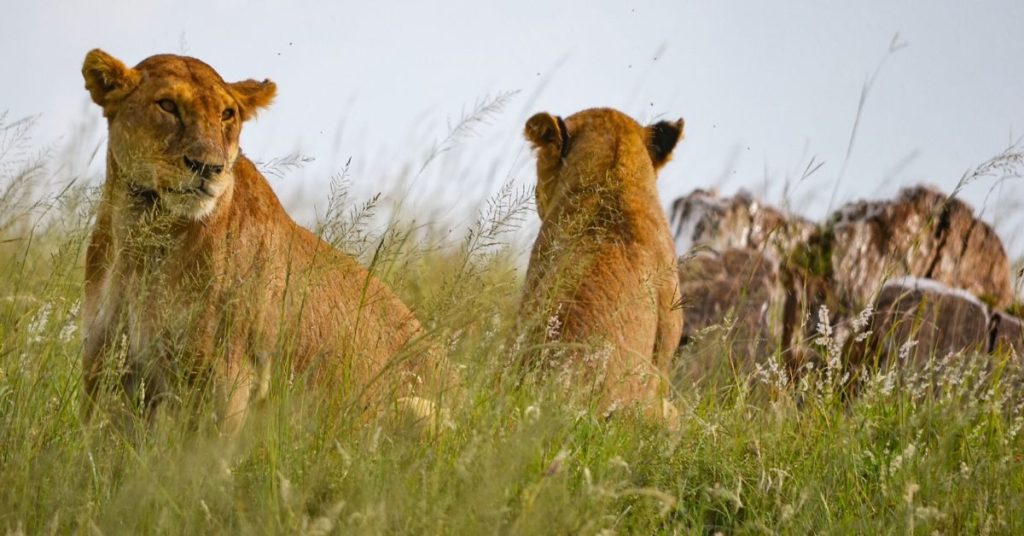Understanding Lion Season and Why It Matters
Lion season is the period when conditions are most favourable for observing lions in their natural habitat. This typically lines up with dry seasons when water sources are limited, and prey becomes easier to find and catch. During this time, lions are more active during daylight hours, making sightings more frequent and more rewarding for safari-goers. Lion prides become easier to track as they tend to gather near waterholes and open areas. This increase in visibility transforms the experience of a safari, providing more opportunities to witness natural lion behaviour up close without disrupting the animals.
Best Times of the Year to Witness Lion Activity

Timing plays a major role in the safari experience. Lion activity is heavily influenced by seasonal changes. In the dry months, grass is shorter, making it easier to spot lions stalking prey or resting under shady trees. Water becomes a valuable resource, drawing not only lions but other wildlife to the same locations, making encounters more likely. Cooler mornings and evenings often bring out higher levels of activity. Knowing the right time of year can make the difference between a distant sighting and an unforgettable close-up view of a pride in motion.
Factors That Influence Lion Behaviour During the Season
Weather and Environmental Conditions
During dry seasons, lions change their hunting and movement patterns. Limited rainfall means fewer watering points, creating predictable gathering spots for prey animals. Lions use these conditions to their advantage, setting ambushes near the remaining sources of water. The lack of thick vegetation also helps them see their prey more clearly and reduces the chances of losing a meal.
Availability of Prey and Water Sources
Prey animals tend to migrate or cluster closer to water sources when food becomes scarce. This creates high-traffic zones where lions focus their efforts. Scarcity forces predators to spend more time on the move, heightening the chances of seeing a lion on the hunt, patrolling their territory, or engaging in social interactions.
Mating and Social Dynamics
The lion season often coincides with periods of heightened mating behaviour. Male lions are seen challenging one another for dominance, and females may be observed caring for cubs or encouraging play among young members of the pride. These social moments provide fascinating insight into the complex relationships within a pride.
What Lion Season Means for Safari Sightings
Frequency of Lion Sightings Compared to Other Times
The concentration of prey and the reduced cover during lion season significantly increase the chances of sightings. Lions tend to stay closer to accessible water, which means that game drives focused on riverbanks and pans are far more productive. Sightings may move from the rare and lucky to near daily events.
Types of Lion Behaviour Tourists Are More Likely to See
During lion season, visitors have the chance to see more than just resting lions. It becomes more common to witness hunts, territorial patrols, mating rituals, and even fights between rival males. Playful behaviour among cubs, tender moments between pride members, and dramatic encounters between predators can all occur within a single drive.
How Lion Season Affects Other Wildlife Movements
Other species adjust their habits around lion activity. Antelope, zebra, and buffalo become more cautious, while smaller predators like jackals and hyenas shift their own strategies to avoid encounters with dominant lions. This ripple effect makes the entire safari experience more dynamic, as the presence of lions often dictates where and how other animals behave.
Key Regions Where Lion Season Is Most Active
Grassland Ecosystems and Open Plains
Open plains make it easier to spot lions, both because the grass is shorter and the terrain offers fewer hiding places. Lions favour these environments for hunting larger game, using teamwork and the lay of the land to trap prey. During lion season, the open areas near dried-up waterholes become prime viewing spots.
River Systems and Waterholes
Rivers and waterholes become lifelines for all animals during the dry months. Lions are no exception. They position themselves strategically near these resources to ambush thirsty prey. Early morning drives along riverbeds often reveal prides lying in wait, while late afternoon visits to waterholes can yield sightings of lions drinking or cooling off.
Wooded and Bushy Areas Favoured by Lion Prides
Even though visibility is lower in denser bush areas, some prides prefer the shelter these regions offer. Female lions raising cubs often choose thickets for protection. With careful tracking and patient observation, safari-goers can still have rewarding encounters in these environments, particularly when lions emerge at dusk or dawn.
Daily Lion Patterns During the Season
Morning Movements and Hunts
In the cooler hours after sunrise, lions are often on the move. They patrol their territories, search for prey, or reunite with other pride members. Morning drives offer the chance to see lions stretching, grooming, and even launching into a hunt if prey is nearby. These moments are often short-lived, making quick spotting and quiet observation important.
Resting Behaviour During the Heat of the Day
As temperatures rise, lions slow down. Most of the day is spent resting in the shade of trees or rocky outcrops. Although they may appear inactive, observing lions during this time can reveal subtle social behaviour: cubs playing, pride members grooming one another, or males reinforcing bonds through gentle contact.
Night-time Activity and Roaring
Lions become most active after sunset. Night drives or early morning outings sometimes capture the last roars of males calling to mark their territories. Listening to the sound of roaring lions cutting through the night air is one of the most unforgettable parts of any safari. Hunting also becomes more successful at night, when cooler air allows for longer periods of movement.
Differences Between Male and Female Lions During the Season
Roles of Male Lions Within Prides
Male lions take responsibility for defending the pride’s territory. During lion season, they spend significant energy patrolling boundaries, roaring to ward off rivals, and occasionally engaging in physical fights. Their presence around waterholes or patrol paths can be intimidating, not just for rivals but also for prey.
Hunting Strategies Led by Female Lions
Females are the primary hunters within a pride. During lion season, their efficiency becomes even more important as prey becomes warier. They use coordinated ambushes, with younger lions learning tactics through observation and participation. Watching a pride of lionesses work together during a hunt offers a glimpse into the teamwork that underpins their survival.
Cub Rearing and Protection
Cubs born earlier in the year are more visible during lion season. They rely heavily on the protection of older pride members. Males tolerate young cubs but rarely engage directly. Females show nurturing behaviour, keeping the cubs hidden during the most dangerous parts of the day and encouraging gentle play to build survival skills.
Impact of Lion Season on Safari Planning
How Guides Adapt Safari Routes Based on Lion Movement
During lion season, experienced guides adjust their strategies to match the habits of the prides. Routes are planned around known watering points, hunting grounds, and sleeping sites. Guides also rely on fresh tracks, alarm calls from other animals, and previous sightings to predict where lions might be found.
Best Times of Day for Game Drives Focused on Lions
The best opportunities for lion sightings occur early in the morning and late in the afternoon. These periods coincide with natural activity peaks, and the light is ideal for viewing and photography. Midday drives often focus on resting lions, providing quieter encounters and time to observe finer social details.
Importance of Patience and Observational Skills During Sightings
While lion season increases the odds of encounters, patience remains a crucial part of the safari experience. Sometimes lions remain hidden for hours before moving. Observing small signs like flicking tails, alert ears, or sudden bird alarm calls can give away a lion’s presence even before a full sighting occurs.
How Lion Season Contributes to Conservation Awareness
Educating Visitors About Lion Ecology
Watching lions during peak activity helps educate visitors about their role in the ecosystem. Guides often share insights into lion hierarchy, hunting methods, and the importance of preserving their natural habitats. First-hand exposure builds a deeper understanding of conservation issues.
Funding Anti-Poaching Efforts Through Tourism
The increase in safari traffic during lion season brings vital funding to anti-poaching operations. Fees from visitors support ranger patrols, conservation education, and habitat restoration projects. This direct link between tourism and preservation efforts ensures that wild lion populations benefit from responsible travel.
Encouraging Responsible Wildlife Tourism Practices
Lion season presents an opportunity to promote ethical behaviour among tourists. Maintaining safe distances, respecting animal space, and following guide instructions help ensure that wildlife remains undisturbed and that the natural balance is preserved for future generations.
Photography Tips Specific to Lion Season
Lighting Conditions for Capturing Lions in Action
Early morning and late afternoon light produce the best conditions for lion photography. The soft light highlights fur textures and enhances the golden tones that lions are famous for. Bright midday sun can flatten details, making it harder to capture dynamic images.
Ethical Photography From a Safe Distance
Using zoom lenses rather than getting physically close ensures that lions are not stressed or forced to change their behaviour. Observing from a respectful distance results in more natural photographs, capturing authentic moments without interference.
Capturing Natural Lion Behaviour Without Disruption
Patience often rewards photographers with scenes of cubs playing, males roaring, or lionesses stalking prey. By remaining quiet and letting the lions set the pace, visitors can document a wider range of behaviours, creating a more complete and respectful photographic story.
How Lion Season Influences the Behaviour of Other Predators
Tensions Between Lions and Hyenas
During lion season, hyenas become more cautious. Lions dominate prime hunting areas and watering holes, and clashes between the two species are common. Watching these interactions provides a glimpse into the constant battle for survival among top predators.
Leopard Movement Patterns in Response to Lion Presence
Leopards tend to avoid direct encounters with lions, often shifting their territories slightly or hunting at different times. Spotting a leopard during lion season can be trickier, but understanding the overlap between their territories offers insights into predator competition and coexistence.
Cheetah Adaptations to Avoid Competition
Cheetahs, being less powerful than lions, adapt by hunting in open areas away from thick bush where lions might ambush them. They also tend to hunt during hotter periods when lions are less active, reducing the risk of losing kills to more dominant predators.
Common Misconceptions About Lion Season
Myth of Lions Being Constantly Active
One of the biggest myths is that lions are constantly hunting and moving. In reality, they spend most of their time resting. Even during lion season, active periods are relatively short, making patience a key part of witnessing memorable moments.
Misunderstanding Lion Group Dynamics
Another misconception is that all lions within a pride are equal. In truth, dominance hierarchies exist, with certain females leading hunts and certain males holding greater authority. Understanding these dynamics deepens appreciation for what is seen on safari.
Beliefs About Roaring and Hunting Frequency
Many people assume that roaring is a sign that lions are about to hunt. Roaring actually serves as a way to communicate territory boundaries and group location, particularly at night. Recognising this behaviour enhances the safari experience by providing better context to what is heard and seen.



